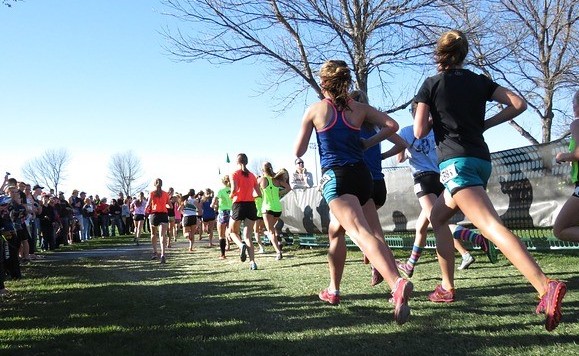
Running Training Schedule

Variety in Your Running Training
If you are looking for a well-rounded training regime you need to know that you are ticking all the boxes in your weekly running training schedule. Simply going out and doing a 5, 10 or 15km run each day at the same pace is not going to unlock your full running potential. It will likely get you over the line but if you are looking at stepping it up a notch or two you need to change things up a bit.

Basically to keep improving you need to keep challenging your body in different ways. Allow your body to adapt to new stresses and challenges and then add in further stresses and challenges. This will keep the body guessing and improving and will ensure better results.
Doing the same workout over and over again will help you up until about two weeks in. After this, you will just plateau with very little improvement. It becomes purely maintenance training.
Planning a running training schedule to include sessions of varying length and intensity will not only see you making vast improvements but will also enhance your enjoyment of the sport.
Running Terms
Before going further I would like to present you with some running terms: 
Pace: generally refers to speed written as time taken to run each kilometer (or mile), eg. I was running 5min/km pace.
Easy (E) Pace: Easy pace should not be stressful at all. It should be very easy to talk at the same time eg. jog pace (approximate heart rate 60-70% of maximum).
Marathon (M) Pace: the average pace you would complete a marathon in. Heart rate approximately 70-80%.
Threshold (T) Pace: is the pace or velocity a person can run that produces an elevated yet steady blood lactate accumulation. It is generally recognised as a pace you could manage to run for about one hour or “comfortably hard’. The body is working hard but still able to clear the lactate accumulated by the working muscles. Heart rate approximately 75-85%.
Tempo Run: is nothing more than a steady 20-30 minute run at T pace. Great for improving your lactate threshold.
Interval (I) Training: is the most demanding type of training for most people. Involves repeated runs of anywhere from one to five minutes each at about 3-5km race pace and relatively brief recovery time between efforts. Heart rate approximately 85-95%
Repetition (R) Training: this is repetitions of short distances performed at above race pace with longer rest periods in between.
Incorporating Variety for Optimum Results
So now you have a basic knowledge of the above terms I will let you know the five main types of training that I place in my weekly schedule, (depending on what phase of training I am in):
1. Slow recovery runs
2. Tempo runs or threshold training
3. Interval training
4. Repetition training
5. Long runs

Depending on what I want to work on at the time (what training phase or what weakness needs work) will determine how many or few of each I will incorporate. There are four phases I break my training into:
1. Base
2. Fitness
3. Speed
4. Taper/Race prep
Base Training: Weeks 1-6. Focusing on building a foundation with slow runs. The base phase doesn’t just mean the first time you are starting out running. This can be when first starting out but also when you have had time off from running. This can be as little as one month off depending on your fitness level when you stopped.
Base training is generally all slow running. It is a phase where you are allowing your muscles, bones, tendons, ligaments and joints to become accustomed to the stress of running again. Depending on your history of running this can be from 4-6 weeks of slow running at various distances, starting with shorter distances and slowly increasing over the base training period.
Check out this article on slow running by Jason Karp PhD (highly respected fitness and running authority and author of several books) “How Running Slower Makes You Faster”.
Fitness Training: Weeks 7-12. Slow recovery, tempo/threshold, long runs and interval training. Once you have completed the base training phase it is time to boost your fitness level. Within this phase of my running training schedule I will slowly introduce one session each of a long run and a threshold run.
From week 4-6 I will then also introduce an interval session each week. This phase will give you three key sessions in your weekly training program to build your fitness and prepare you for phase three. These three sessions will have an easy run day or rest day between them depending on your personal schedule.

Speed Training Week 13-18. Slow runs, tempo/threshold, long runs, interval and repetition training. We have now had six weeks of base and six weeks of fitness, it is now time to add in some speed.
By this time your body should be ready to add in some speed training. Now I know that some people are not concerned with improving their speed and therefore times but in my opinion it is a valuable tool to complement you as a well-rounded runner. The benefits of speed training go beyond just improving your pace, they improve the enjoyment of running and also provide known health benefits.
For more on the health benefits of high intensity workouts such as interval and repetition sessions, check out Lisa’s post on running after forty (section on interval training). You can read it here.
If you would like to become a better all round runner, keep up with your friends and improve your PB in the next marathon or 10km then speed training should be a part of your regime.
Speedy Benefits
By using speed training in the way of interval and/or repetition training it will make your current average pace so much easier to hold. Your once “race pace” will become your tempo pace and running will start to feel much easier. By introducing speed (faster pace than your current race pace but not sprinting) you will improve your aerobic capacity and develop your muscles so they are more relaxed at a faster pace than you are accustomed to.
From weeks 13-18 along with the other training sessions I will also include an interval and/or repetition session in my weekly program with easy run days in between.
Taper/Race Prep Week 19-22: Phase four is the final phase and should be less stressful than the previous phases of training. As you progress through this stage you will start to feel stronger and have a lot more energy to burn.
The length of time taken to taper is directly related to the distance of the race you are training for. You would start to reduce your mileage three weeks before for a marathon but only a week to ten days before for a 10km race.
In this period you might begin to think that you are not training hard enough or that you are losing your fitness gains. This is normal, but with fewer kilometers and less intense sessions this phase is focused on giving your body time to build energy stores and be race ready. The goal of tapering is to provide performance without fatigue on race day.
Bringing it all Together
So to summarise, in my regular training weeks I will try to have one of the following quality sessions: threshold, interval, repetition and long run. If I am training for more of an endurance event my training regime would be slightly different from training for a 5-10km road race. However, the four key sessions would still regularly be used for each week.
A good running training schedule should keep your body guessing and deliver new challenges. This will ensure you continue to improve in your running journey. Not only will you avoid becoming bored but you just might surprise yourself at your next race event.
Happy Running!
Andrew.